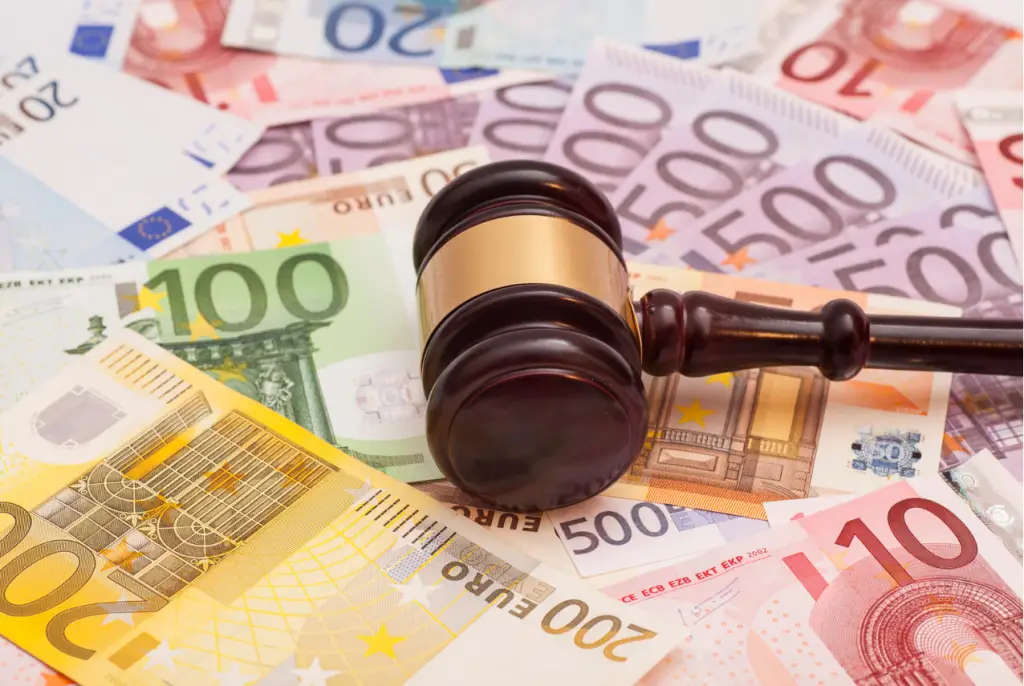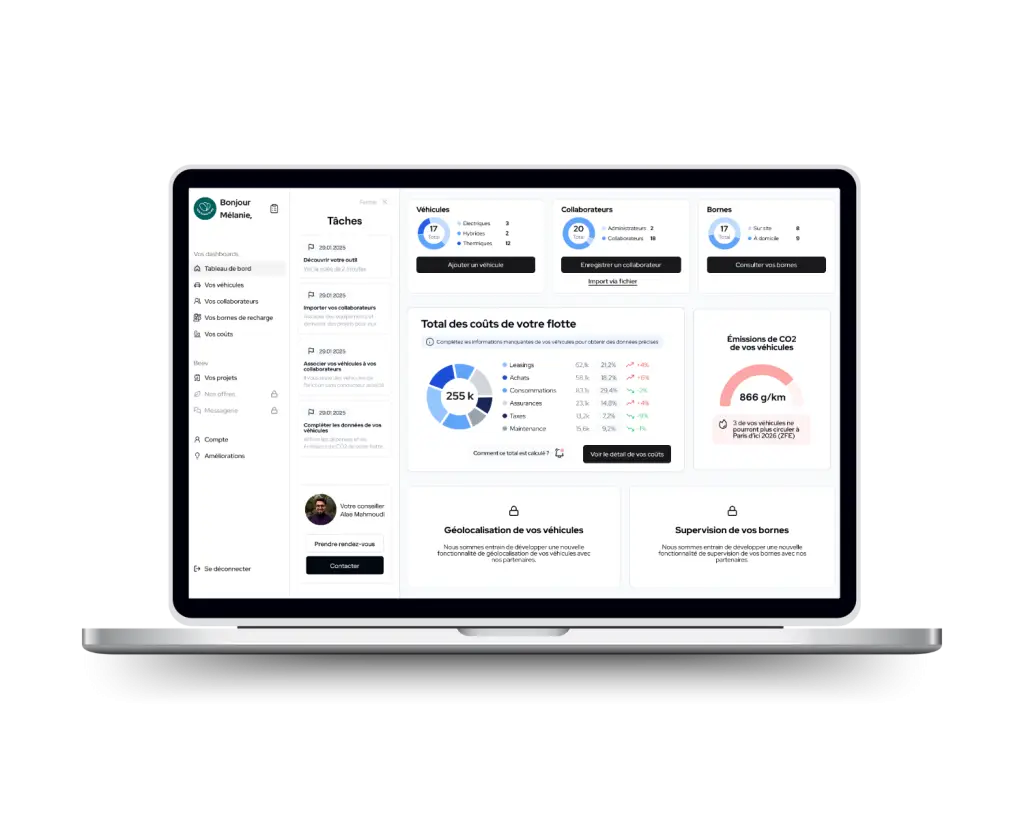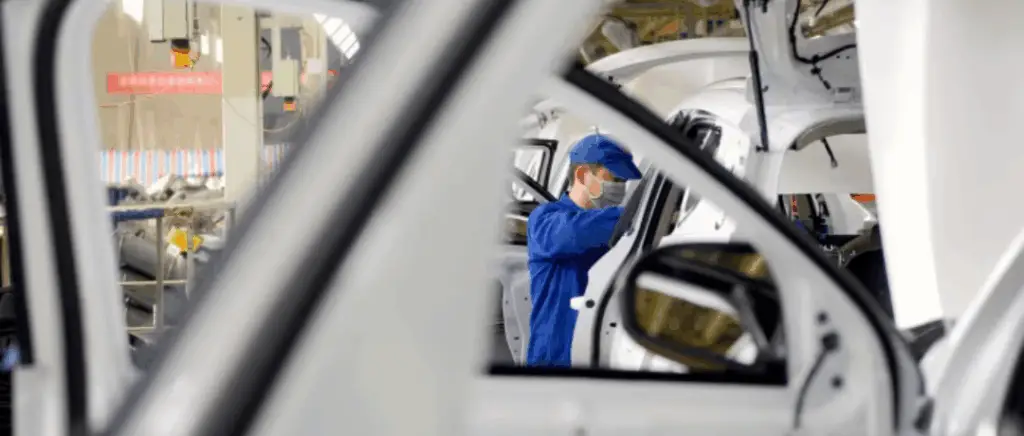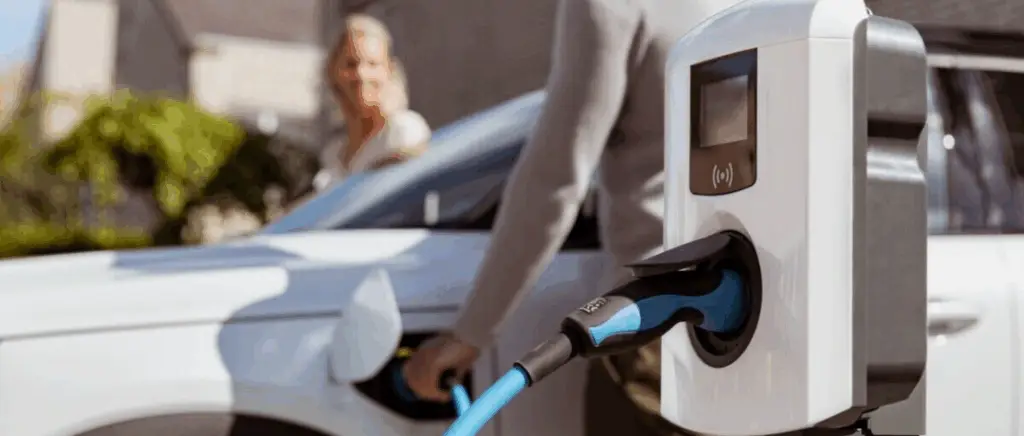What is fleet greening and why has it become a priority?
The greening of vehicle fleets involves replacing combustion-powered vehicles with low CO2 emission models, such as electric, plug-in hybrid or hydrogen-powered vehicles. This transition has become a priority for businesses because of its significant impact on reducing greenhouse gas emissions, which account for 35% of CO2 emissions in business for transport. Greening is in line with national targets for reducing emissions, aiming for a reduction of 33% by 2030 and carbon neutrality by 2050.
Why is the transition to green fleets essential for the future of businesses?
The transition to green fleets is essential for the future of businesses, as it offers numerous economic and environmental benefits. As well as complying with increasingly stringent regulations, greening also means substantial savings on fuel and maintenance costs.
Electric and hybrid vehicles are more energy efficient and require less maintenance than traditional vehicles. What's more, this approach improves the company's brand image in terms of sustainable development, which can be a major competitive advantage.
What are the LOM legal obligations for companies concerning vehicle fleets?
The Law on Mobility (LOM) imposes a number of legal obligations on companies with regard to their vehicle fleets:
- Renewing the fleet with low-emission vehicles:
For companies with more than 50 employees and a fleet of more than 100 light vehicles (GVW < 3.5 tonnes).
- Progressive renewal targets :
- 10% from 1 January 2022
- 20% from 1 January 2024
- 35% from 1 January 2027
- 50% from 1 January 2030
- Installation of recharging points in company car parks:
- For 1 January 2025 :
- Existing car parks with more than 20 spaces: at least 1 charging point per 20 spaces
- New or renovated car parks with more than 10 spaces: at least 20% of spaces reserved for recharging points
- Setting up a Company Mobility Plan (CMMP) Mandatory for companies with more than 50 employees
- Compliance with traffic restrictions in Low Emission Zones (ZFE-m)
- Every year, companies must declare the number and type of new vehicles acquired or leased for their business activities.
It is important to note that, at present, the government has not established any specific penalties for non-compliance with the LOM law. However, stricter controls and reminders of the law are planned, and fines could be considered in certain cases.
A fine of up to €15,000 per non-compliant vehicle could be imposed on those who fail to meet the requirements for low-emission vehicles.
The new penalties approved by the Joint Committee: what companies need to know
What are the main penalties for non-compliance with the greening of fleets?
Companies that fail to meet their fleet greening quotas now face progressive fines:
- 2,000 per missing vehicle in 2025
- 4,000 euros per missing vehicle in 2026
- 5,000 per missing vehicle in 2027
These fines are capped at 1% of the company's French turnover. In addition, non-compliant companies will be excluded from public procurement contracts.
CASE EXAMPLE
Let's take the example of a French service company with annual sales of €100 million. This company has a fleet of 200 vehicles and is subject to greening obligations.
By 2025, the company should have 40 low-emission vehicles (20% of its fleet), but it only has 30, so it is short of 10 compliant vehicles.
Calculation of the fine for 2025 :
10 missing vehicles x €2,000 = €20,000
In 2026, the company has 50 compliant vehicles out of the 80 required (40% in its fleet). There is a shortfall of 30 vehicles.
Calculation of the fine for 2026 :
30 missing vehicles x €4,000 = €120,000
In 2027, the company has 100 compliant vehicles out of the 130 required (65% in its fleet). There is a shortfall of 30 vehicles.
Calculation of the fine for 2027 :
30 missing vehicles x €5,000 = €150,000
The fine is capped at 1% of the company's turnover, or €1 million in this case. The final fine will therefore be €150,000.
In addition, the company will be excluded from public procurement contracts, which could have a significant impact on its business if it works regularly with the public sector.
How will the new regulations affect companies with non-ecological fleets?
The new regulations will have a significant impact on companies that have not yet begun the transition to low-emission vehicles:
- Increased financial pressure: The substantial fines will give companies a strong incentive to speed up the greening of their fleets.
- Extended scope: From 2028, companies with 50 vehicles (compared with 100 at present) will be subject to the greening obligations.
- Exclusion of plug-in hybrids: Only electric and hydrogen-powered vehicles will be considered compliant, increasing the pressure on companies to adopt these technologies.
- Increased transparency obligations: Companies will have to include their targets for decarbonising the car fleet in their extra-financial performance declaration, on pain of a fine of 0.1% of French sales.
- Impact on leasing contracts: Long-term leasers will also be subject to penalties, which could affect the options available to businesses.
These measures are designed to speed up the transition to greener fleets, with major financial and operational consequences for companies that are slow to adapt.
Greening fleets: are you in compliance with the new rules?
What practical steps do you need to take to comply with the requirements?
| Aspect | Description |
|---|---|
| Concrete commitment | Installation of charging stations demonstrates tangible action in favour of the energy transition and sustainable mobility |
| Strengthening CSR | Is part of a Corporate Social Responsibility approach, demonstrating a commitment to the well-being of employees and the environment |
| Enhanced brand image | Positive perception as a responsible company, attracting customers and partners who share the same environmental values |
| Reduction incarbon footprint | Facilitates the use of electric vehicles, actively contributing to the reduction of CO2 emissions |
| Environmental certifications | Can help you to obtain property certifications such as BREEAM or LEED, which promote ecological commitments |
| Regulatory anticipation | Positions the company ahead of future environmental regulations, demonstrating its proactivity |
How can you assess the carbon footprint of your vehicle fleet?
There are two main methods you can use to assess your fleet's carbon footprint:
Mathematical estimate :
- Determine the quantity of fuel used in litres
Calculate the amount of CO2 produced by multiplying the volume of fuel by 2.68 kg for diesel or 2.31 kg for petrol.
Precise measurement with fleet management tools :
Beev's electric fleet management tool offers an effective solution for assessing the carbon footprint of your vehicle fleet. This free platform enables real-time monitoring of the status of your fleet and charging stations, providing essential data for calculating CO2 emissions. Thanks to its intuitive interface, you can easily record and track crucial information such as the mileage, energy consumption and performance of each vehicle.
Le fleet manager Beev also includes a reminder calendar for maintenance and servicing, helping to maintain the energy efficiency of your fleet. By using this tool, not only can you optimise the management of your electric cars, but you can also accurately quantify the reductions in CO2 emissions achieved, making it easier to include this data in your CSR report.
Greening strategies: how to make a successful transition to a greener fleet?
What are the most effective solutions for electrifying a fleet?
The most effective solutions for electrifying a corporate fleet include careful planning and the use of specialist management software. These tools can optimise charging times and reduce idle times by up to 30%, while scheduling recharges during off-peak hours to reduce electricity costs by 15 to 20%.
An effective approach combines different recharging solutions: at the depot for the majority of vehicles, at home for employees who do not return to the depot each evening, and on the road via partnerships with public recharging networks. It is also crucial to put in place an effective monitoring system and proactive maintenance to guarantee the reliability of the recharging service.
What financial assistance and subsidies are available to companies?

By 2025 aid available to companies wishing to electrify their fleet and install charging stations are limited but still available. Businesses can benefit from reduced VAT of 5.5% on recharging infrastructures.
Local subsidies are also available, particularly in certain regions such as the Great East and the NormandyThese cover up to 50% of the cost of installing the charging points, with ceilings ranging from €1,000 to €3,000 per point. For vehicles electric vans For light commercial vehicles (LCVs), aid of between €2,600 and €3,200 is available, depending on the size of the company's fleet. HGVs and coaches benefit from more substantial aid via the Energy Savings Certificates (EEC) scheme, with amounts of up to €53,000 for road tractors over 26 tonnes.
It is important to note that this aid can vary depending on the region and the specific characteristics of each company, and it is advisable to check with the local authorities to find out about the specific schemes in force.
The benefits of successful greening for your company
How can switching to a green fleet improve your company's profitability?
Switching to an environmentally-friendly fleet can significantly improve the profitability of your business. Although the initial investment may be higher, electric cars offer lower running costs in the long term. Fuel costs are considerably lower, as electricity is cheaper than fossil fuels. Electric cars also require less maintenance, which reduces servicing costs.
Studies show that for some companies total cost of ownership (TCO) The cost of electric cars can be lower than that of internal combustion cars, with a return on investment possible after 5 to 10 years of use. These savings enable companies to redirect resources towards other innovative initiatives or sustainable growth projects, strengthening their competitiveness in the marketplace.
Use the TCO simulator to calculate the total cost of ownership of your car and compare it with its internal combustion equivalent.
What are the long-term benefits for your brand image and operational costs?
The long-term benefits in terms of brand image and operating costs are manifold. In terms of image, adopting a green fleet positions the company as a responsible and environmentally aware player. This meets the growing expectations of consumers and investors in terms of sustainability, thereby improving the company's reputation. In terms of operational costs, the benefits are substantial.
Electric cars offer a significant reduction in fuel and maintenance costs. In addition, simplifying the maintenance of electric cars contributes to greater operational efficiency. In the long term, these benefits translate into improved overall profitability for the company, while reinforcing its commitment to sustainable development and meeting increasingly stringent regulatory requirements in terms of CO2 emissions.
Conclusion
In conclusion, the transition to an electric fleet is no longer a choice, but a strategic necessity for companies in 2025. L'installation of recharging points for businesses is becoming a crucial element in this transformation, providing effective support for the deployment of electric cars. Visit professional leasing now offers flexible, cost-effective solutions to support this transformation, significantly reducing the financial barriers to entry.
Companies that adopt an electric fleet quickly will not only be complying with new regulations, but will also be positioning themselves as innovative and responsible players. Beyond the legal constraints, this transition represents an opportunity to reduce operating costs over the long term, improve brand image and make a concrete contribution to the fight against climate change.
The message is clear: acting now is not just a regulatory obligation, it's a strategic investment in your company's future.

































